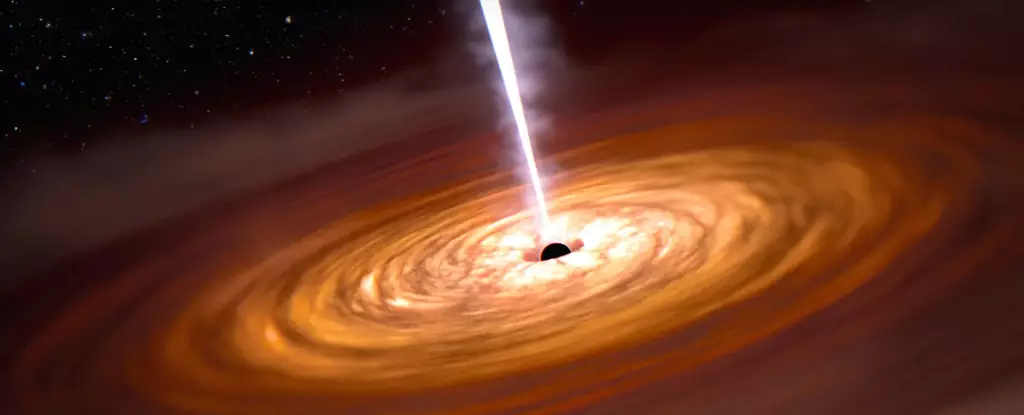The study of cosmic rays has long been a challenge for scientists trying to understand the mysteries of the Universe. These high-energy particles, traveling at speeds close to that of light, constantly bombard Earth, yet their origins and mechanisms of acceleration remain largely unknown. However, a recent discovery involving a small black hole has shed new light on this enigma. Researchers have identified a naturally occurring particle accelerator associated with a microquasar called SS 433. This unique finding provides an opportunity to investigate the mechanisms that enable cosmic rays to reach Earth at such incredible speeds.
For years, scientists have acknowledged the existence of particle acceleration in the Universe without fully comprehending its origin. The recent discovery of a particle accelerator near a black hole marks a significant breakthrough in this field of study. Laura Olivera-Nieto, a researcher from the Max-Planck-Institut für Kernphysik in Heidelberg, explains the importance of this finding: “Now we’re entering an era where we can actually answer where and how” these cosmic rays are accelerated.
Earth is constantly bombarded by cosmic rays, which, if left unfiltered, would make life on our planet impossible. These charged particles carry immense energy and travel at almost the speed of light, allowing them to pass effortlessly through our bodies and cause significant damage to our DNA. Fortunately, our planet’s atmosphere shields us from the worst effects of cosmic radiation. However, as the prospect of interplanetary colonization becomes a reality, our understanding of cosmic rays and their mechanisms becomes critical.
Studying cosmic rays originating from quasars and supernovae poses significant challenges for scientists. Quasars, which are located very far away, emit high-energy cosmic rays that can severely impact our Milky Way galaxy if any closer. Consequently, their study is limited to observing large blobs, with little detail visible. On the other hand, supernovae, though closer in proximity, emit low-energy rays that appear faint when observed from Earth’s telescopes.
However, SS 433, a microquasar, has presented scientists with a rare opportunity to observe cosmic rays in unprecedented detail. Located in the Manatee nebula, approximately 18,000 light-years away, SS 433 is a small black hole ten times the mass of the Sun. Olivera-Nieto emphasizes the uniqueness of this microquasar, which has displayed jets for an extended period of 50 years. This extended activity distinguishes SS 433 from other microquasars, which typically exhibit jets for only a day or two.
The observation of SS 433’s jets has led scientists to develop three theories regarding the mechanism of particle acceleration. The first hypothesis suggests that magnetic field lines around the black hole carry particles that eventually snap, propelling them into space. However, this would require the accelerator to be in close proximity to the black hole. The second theory proposes that the black hole creates tunnels that gradually increase the particles’ speed as they bounce off the walls.
However, the recent observation favors a third hypothesis, which suggests that particles encounter an invisible barrier or “discontinuity” that abruptly stops their progress. The change in speed causes energy to build up around the particles until they break through. Olivera-Nieto admits that the nature of this shock is still unknown and poses an intriguing question for scientists. The symmetry of the shock occurring on both sides suggests a connection to the system itself, but further research is necessary to fully comprehend this phenomenon.
The discovery of a naturally occurring particle accelerator near a small black hole marks a significant step in unraveling the mysteries of cosmic rays. By studying the jets of SS 433, scientists have gained valuable insights into the mechanisms that accelerate these high-energy particles to nearly the speed of light. Understanding how cosmic rays reach Earth is crucial, particularly as we consider expanding human presence beyond our planet. Although many questions remain unanswered, this groundbreaking discovery paves the way for future research and ultimately a deeper understanding of the Universe and our place within it.


Leave a Reply